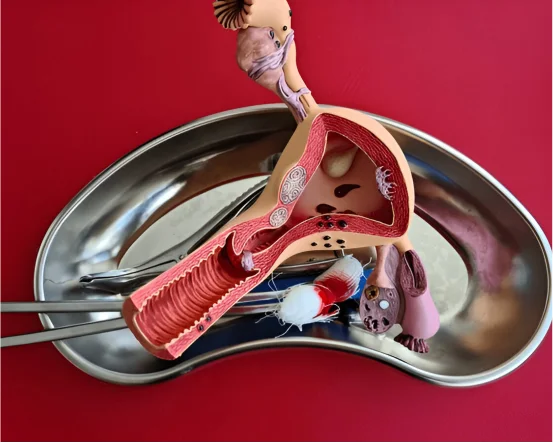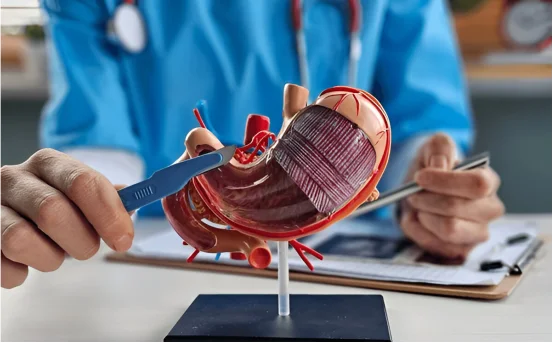Pneumonectomy sounds complicated because it is: it means taking out an entire lung. Doctors usually recommend this big operation when other options, like removing just part of a lung, won’t do the job. Conditions like lung cancer, really bad infections, or lungs that just can’t be fixed any more often make a full lung removal the safest choice. Even though the surgery can save a person’s life, recovering from it takes a lot of work and careful follow-up care. Understanding the treatment for pneumonectomy surgery is crucial for patients. Therefore, discussing the treatment for pneumonectomy surgery with your healthcare provider before the procedure is essential.
Why Do Doctors Perform a Pneumonectomy?
Surgeons almost never jump straight to a pneumonectomy unless smaller surgeries have already been ruled out. The main reasons they end up going this route are:
- Lung Cancer:- This is, by far, the biggest reason. When a tumor is too big or sits in a spot that makes it impossible to safely leave behind a healthy piece of tissue, taking out the whole lung is the best plan.
- Treatment for Pneumonectomy Surgery: It is essential to follow the post-operative care plan to ensure the best recovery outcomes.
- Severe Lung Infections:- Chronic or stubborn infections—like really tough cases of tuberculosis, bronchiectasis, or some rare fungal illnesses—can destroy so much lung tissue that doctors have no choice but to remove what’s been damaged. Otherwise, the infection might spread and cause even more trouble.
- Trauma or Injury:- Sometimes a person suffers a car crash, stab wound, or some other severe chest injury that wrecks a lung beyond repair. In those emergencies, getting rid of the damaged lung can quickly save a life.
- Congenital Lung Abnormalities:- Some kids are born with lung problems that can make it necessary to remove part of a lung, but this isn’t something you see every day.
Types of Pneumonectomy
Before doctors get into treatment options, they first look at which kind of pneumonectomy they’ll perform, since the plan can change a bit depending on the type:
- Standard Pneumonectomy: This is when one whole lung—either the left or the right—is taken out.
- Extrapleural Pneumonectomy (EPP): This one is bigger and removes the lung, but also the pleura that surrounds it, part of the diaphragm, and sometimes the pericardium. Doctors usually do EPP for patients with mesothelioma.
Treatment Before Pneumonectomy Surgery (Pre-Operative Care)
Thorough Medical Evaluation
Before anything else, patients go through a complete series of tests, such as:
- A chest CT scan
- Pulmonary function tests (PFTs)
- A bronchoscopy to look inside the airways
- A cardiac evaluation to check the heart
- Pulmonary Rehabilitation:- Getting the lungs in the best shape possible is really important. Breathing exercises and physical therapy help the other lung get ready to do extra work after the surgery. The treatment for pneumonectomy surgery often includes rehabilitation programs tailored to the patient’s needs.
- Nutritional Support:- Doctors often recommend a high-protein diet. Eating well during this time lowers the chances of complications once the surgery is done.
- Smoking Cessation:- Patients are asked to quit smoking weeks ahead of the surgery. Giving up tobacco opens up the airways and really cuts down on problems later on.
Treatment After Pneumonectomy (Post-Operative Care & Recovery)
Once the surgery is finished, care is a team effort. The focus is on controlling pain, keeping the lungs clear with respiratory therapy, preventing infections, and making sure doctors stay on top of things during recovery.
-
- Hospital Recovery (7–10 Days):- Right after the operation, the patient usually spends time in the ICU where nurses and doctors watch almost every beep on the monitor. To help with breathing, small tubes called chest drains are put in so any leftover air or fluid can be sucked out. Patients are gently pushed to cough and do light physio exercises because those simple moves keep the lungs clear and lower the chances of getting pneumonia or other infections.
- Pain Management:- At first pain is dealt with using an epidural or a targeted nerve block, which makes a big difference. Once the patient is starting to feel a little stronger, doctors switch over to regular oral painkillers before letting them head home.
- Respiratory Therapy:- To keep the lungs working well, patients blow into an incentive spirometer and repeat deep breathing exercises. Sometimes extra oxygen is needed, especially in the first couple of days.
- Mobility & Rehabilitation:- Getting out of bed early is still a big push, but it really helps. Pulmonary rehab is more than just walking; it also teaches good posture and wind control, almost like breathing yoga.
- Wound Care and Infection Prevention:- Dressings get changed often, and if a hospital team suspects infection, they don’t waste time starting antibiotics. They also keep a close eye for signs of empyema, which is when pus collects around the lungs instead of air.
- Monitoring for Complications:- After a pneumonectomy, a few problems can show up: the heart might skip beats, pneumonia could sneak in, or a subtler but serious broncho-pleural fistula can form. Doctors are quick to act on any fluid that builds up in the new space left behind so patients avoid longer stays or setbacks.
Long-Term Care and Everyday Life After Losing a Lung
The treatment for pneumonectomy surgery is not only about the surgical procedure but also involves long-term health management.
- Keep Coming Back for Check-Ups:- Even after you head home from the hospital, your doctor wants to keep an eye on things. That usually means a few routine tests, like a chest X-ray or a CT scan, plus a quick lung-function check with the little breathing tube. If the surgery was because of cancer, you’ll still be seeing the oncologist every so often to make sure everything’s clear. Regular follow-ups and understanding the treatment for pneumonectomy surgery are crucial for maintaining lung health post-surgery.
- Know Your Meds:- Depending on how your lungs are doing, you could end up with a couple of prescriptions. Many folks take a bronchodilator to help the air move in and out more easily. If a cough or fever pops up, a course of antibiotics might come next. For some patients, especially those who have a higher risk of blood clots, the doctor will also suggest blood thinners.
- Small Changes, Big Impact:- Everyday habits matter more when you have one lung to protect. Steering clear of smoky bars, heavy traffic fumes, and dusty construction sites is a good start. Eating plenty of colorful fruits and veggies packed with antioxidants—think berries, leafy greens, and nuts—gives those remaining alveoli an extra boost. Most people are told to ease back into chores and exercise, so check in with your pulmonologist before diving back into running or lifting.
- Don’t Forget the Head Space:- Living with one lung can mess with your mood, and that’s totally normal. Talking to a therapist or online support group can make it feel less lonely, whether it’s you who had the surgery or it’s a partner or parent trying to help.
- Newer Options on the Horizon:- Pneumonectomy has been around a long time, but it’s not the only game in town anymore. Surgeons are now using lung-sparing techniques, such as wedge resections and lobectomies, for patients whose cancer is caught very early. Targeted pills and immunotherapy infusions are also gaining ground, giving some people effective choices without having to go under the knife. Robot-assisted surgery or VATS—basically tiny cameras and instruments—are letting doctors reach trouble spots through smaller cuts, which often means less pain and faster healing.
Conclusion
Having a pneumonectomy is no walk in the park; it’s major surgery and does come with some serious risks. Still, lots of people go on to live happy, active lives afterward, so don’t lose hope. Success after the operation usually boils down to good care while you’re healing, check-ups that stick to the schedule, and people around you who can help when the going gets tough. Whether the lung has to come out because of cancer, a bad infection, or an injury, doctors aim to give you back the best quality of life they can.
If you or someone close to you is staring down the date for this surgery, make sure to talk things over with both a chest surgeon and a lung specialist. They’ll spell out all the options, explain what you can expect, and put together a treatment plan. Follow that plan and the chance to recover—and maybe even surprise yourself with what you can do—becomes very real.























